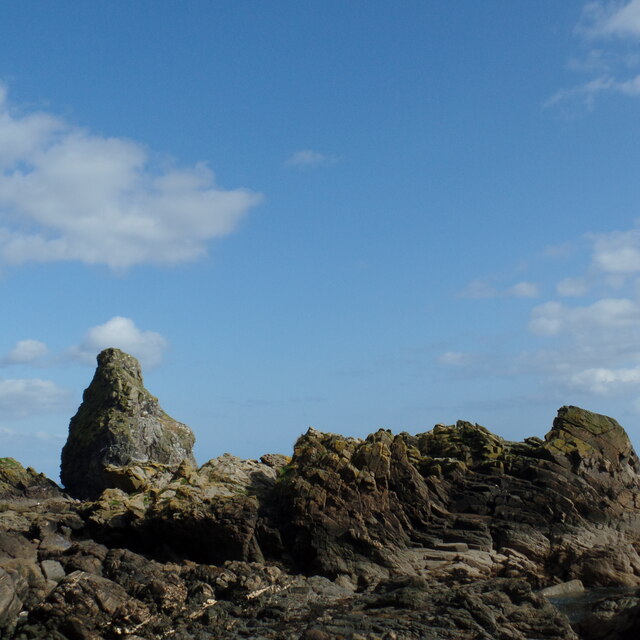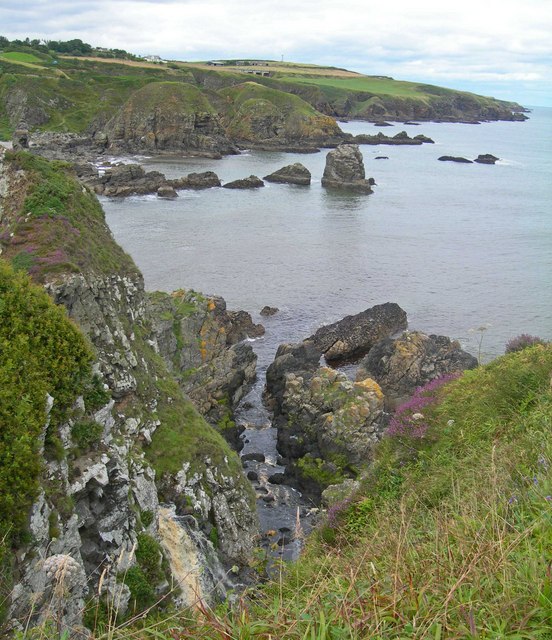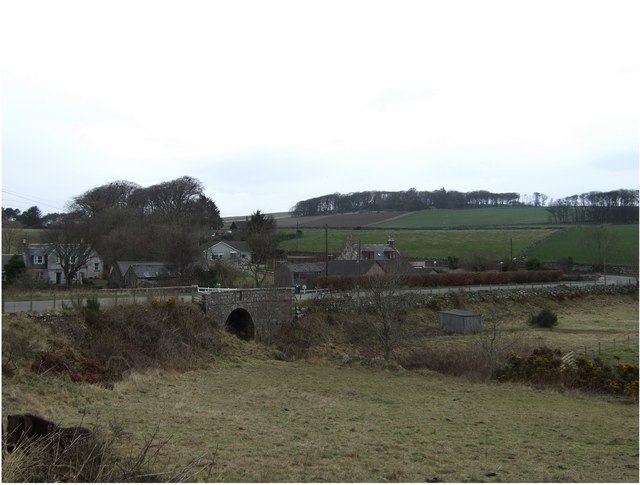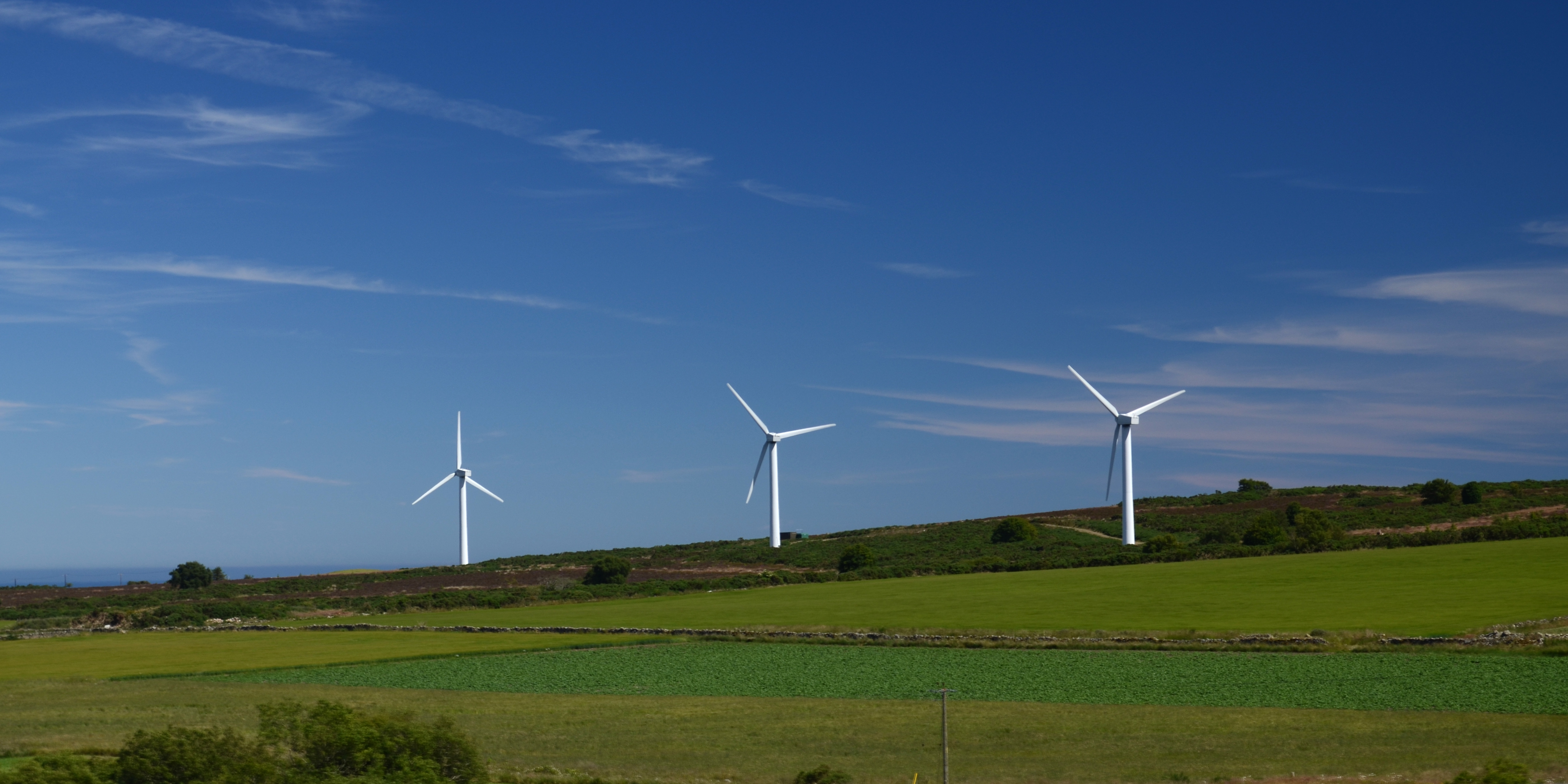Hall Heugh
Cliff, Slope in Kincardineshire
Scotland
Hall Heugh

Hall Heugh is a prominent cliff located in Kincardineshire, Scotland. It is situated on the eastern coast, overlooking the North Sea. The cliff rises to an impressive height of approximately 150 meters, making it a significant geographical feature in the area.
The cliff at Hall Heugh is characterized by its steep slope and jagged rock formations. It is composed mainly of sedimentary rocks, including sandstone and shale, which have been weathered by the relentless pounding of the sea over thousands of years. This erosion has created a striking landscape, with deep crevices and narrow gullies cutting through the cliff face.
The cliff offers breathtaking views of the surrounding coastline and the vast expanse of the North Sea. It is a popular spot for nature enthusiasts and hikers who are drawn to its rugged beauty and the opportunity to observe various seabird species that inhabit the area. The cliff is known to be home to colonies of nesting birds such as fulmars, guillemots, and razorbills.
Due to its sheer height and unstable nature, caution is advised when approaching the edge of Hall Heugh. The cliff can be treacherous, especially during inclement weather conditions, and visitors are urged to follow safety guidelines and stay away from the cliff edge.
Hall Heugh is a remarkable natural landmark in Kincardineshire, offering a glimpse into the geological history of the region and providing visitors with an awe-inspiring experience of Scotland's coastal beauty.
If you have any feedback on the listing, please let us know in the comments section below.
Hall Heugh Images
Images are sourced within 2km of 57.000875/-2.1702914 or Grid Reference NO8989. Thanks to Geograph Open Source API. All images are credited.










Hall Heugh is located at Grid Ref: NO8989 (Lat: 57.000875, Lng: -2.1702914)
Unitary Authority: Aberdeenshire
Police Authority: North East
What 3 Words
///quitter.blesses.novels. Near Newtonhill, Aberdeenshire
Nearby Locations
Related Wikis
Limpet Burn
Limpet Burn is a watercourse in Aberdeenshire, Scotland whose discharge is deemed part of the North Sea coastal drainage. Prominent geographic features...
Doonie Point
Doonie Point is a rocky headland situated approximately 1.5 kilometres south of the village of Muchalls in Aberdeenshire, Scotland. The clifftop of Doonie...
Mill of Muchalls
The Mill of Muchalls is an historic water-powered mill located along the Burn of Muchalls in Aberdeenshire, Scotland. This mill is situated near to the...
Burn of Monboys
Burn of Monboys is a stream that rises in the Mounth, or eastern range of the Grampian Mountains, northwest of Stonehaven and south of Netherley, Aberdeenshire...
Burn of Muchalls
The Burn of Muchalls is an easterly flowing stream in Aberdeenshire, Scotland that discharges to the North Sea. Its point of discharge is on a rocky beach...
Bridge of Muchalls
Bridge of Muchalls is an entirely residential hamlet in Aberdeenshire, Scotland by the North Sea. It is on the A90 dual carriageway about three miles...
Limpet Mill railway station
Limpet Mill was a railway station in Kincardineshire, Scotland from 1849 to 1850 on the Aberdeen Railway. == History == This station was opened on 1 November...
Kempstone Hill
Kempstone Hill is a landform in Aberdeenshire, Scotland within the Mounth Range of the Grampian Mountains. The peak elevation of this mountain is 132...
Nearby Amenities
Located within 500m of 57.000875,-2.1702914Have you been to Hall Heugh?
Leave your review of Hall Heugh below (or comments, questions and feedback).










